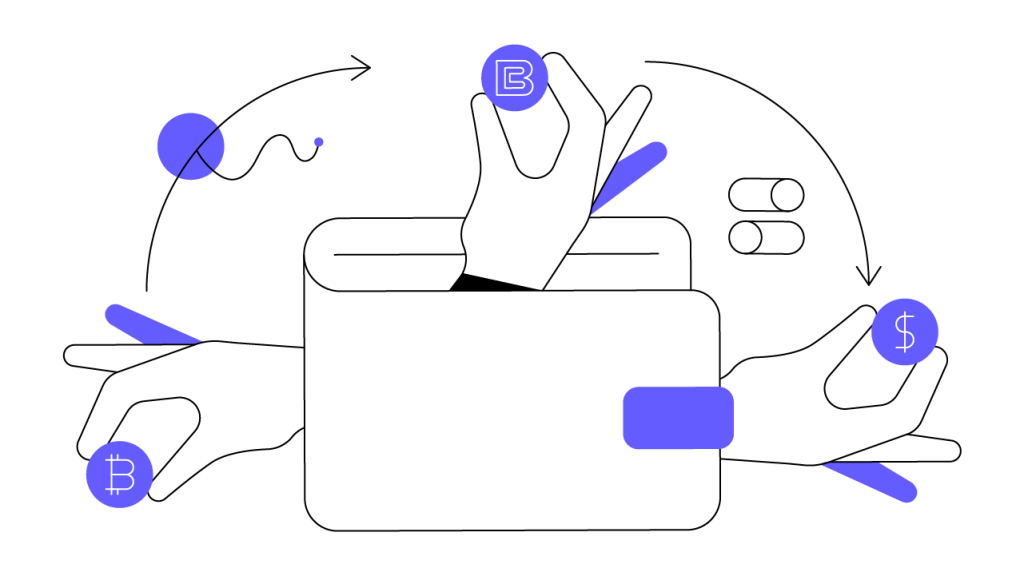BRD: A Secure Crypto Wallet and Rewards Platform
BRD is a crypto wallet and rewards platform that seeks to maintain simplicity and reliability by delivering an exceptional user interface and intuitive in-app user experience through BRD wallet.

Summary
Formerly known as Bread, BRD began in 2014 as a bitcoin wallet application and has since grown substantially, both with respect to functionality and user base. BRD is non-custodial, providing a highly secure and powerful cryptocurrency wallet solution with a user-friendly application interface all while users have complete control of their own funds. The platform seeks to empower underbanked populations worldwide, providing them with improved access to cryptocurrencies and financial services.
Secure Crypto On-Ramp and Storage
BRD's primary goals are to ensure ease-of-use and security for its clients. seeks to maintain this all-important simplicity and reliability by developing an exceptional user interface and overall in-app user experience through BRD wallet. In terms of security, BRD doesn’t directly store or access users’ crypto assets. Instead, it links them straight to existing blockchain protocols. This way, users can safely store and access their crypto assets on their device, leveraging the powerful mobile device security systems already in place and making contact only with the intended blockchain protocols and platforms related to those assets. BRD merely facilitates this process, rather than serving as its focal point. This structure mitigates the probability of network hacks or system failures. Simply put, unlike centralized services, there is no central source of funds for hackers to attack.
If BRD were ever compromised, or even disabled, all users’ coins would remain in the BRD app on their smartphones. The functionalities of the app are independent of BRD’s blockchain-based servers, ensuring users maintain control of their assets regardless of the organization’s status. In contrast to this decentralized structure, traditional banking systems are often burdened with systemic fragility and critical points of vulnerability. Further, banks often experience significant issues with international transactions, which tend to be both very slow and highly expensive. BRD allows for 24/7 asset transfers worldwide with minimal transaction fees.
BRD Tokens, Rewards, and Perks
The BRD token (BRD) was launched at the end of 2017. It is a standard based on the Ethereum blockchain. BRD gives each user a unique rewards ID which allows the user to participate in the BRD rewards program and can be easily purchased or traded on multiple exchange platforms.
The BRD token is pivotal to the popular where each install has a BRD Rewards ID associated with it. BRD took a revolutionary step in the blockchain industry when it became one of the first crypto wallets to offer these types of rewards benefits to its users. BRD tokens can be used to save money on transaction fees when trading in the app, saving on Ethereum network fees when sending transactions, and more.
BRD Wallet
The BRD wallet (formerly known as “breadwallet”) was released in 2014 and became the first decentralized in the App Store. It is currently available for free on both the iOS and Android platforms. As outlined above, the BRD token was created in late 2017 to support the BRD wallet’s existing user base and blockchain ecosystem. BRD wallet is a hot wallet, meaning the data stored on the platform is accessible to the internet, but unlike some other hot wallets, it does not share sensitive information and user data between its system servers. Initially, the BRD wallet only supported bitcoin, but has expanded to support all Ethereum-based ERC-20 tokens as well as Hedera, Bitcoin Cash, XRP, and many more.
BRD strives to maintain one of the most user-friendly interfaces in the crypto wallet market. For instance, setup does not require a formal account registration process or any personally identifiable information (PII). After setup, an existing wallet can be imported or a new one can easily be created. BRD wallet was the first ever mobile-based blockchain wallet linked directly to the Bitcoin blockchain network. Through its payments system, the platform securely interacts with various blockchain protocols while minimizing the threat of third-party interference. In some regions (depending on local cryptocurrency regulations), users can purchase bitcoin inside the BRD app. Additionally, using the “economy,” “regular,” or “priority” options in the BRD app, users can choose the amount they’re willing to pay for transaction costs, which allows them to save money in the asset transfer process.
Over the last 30 years, the numbers and costs of various fees charged by financial institutions have increased. This phenomenon demonstrates the market’s wider need for services like BRD, which provide a range of decentralized financial services at a low cost. As blockchain adoption continues to grow, BRD has cemented its role as a valuable force in the blockchain industry.

Author
COO, BRD
Adam Zadikoff is COO of BRD, where he heads up product and engineering across multiple lines of business as well as operations, HR, and Investor Relations. Adam is focused on growing the reach of cryptocurrencies in order to advance the world’s financial systems. He has spent more than 15 years working in startups with multiple successful exits under his belt.
Follow me on:
Is this article helpful?
